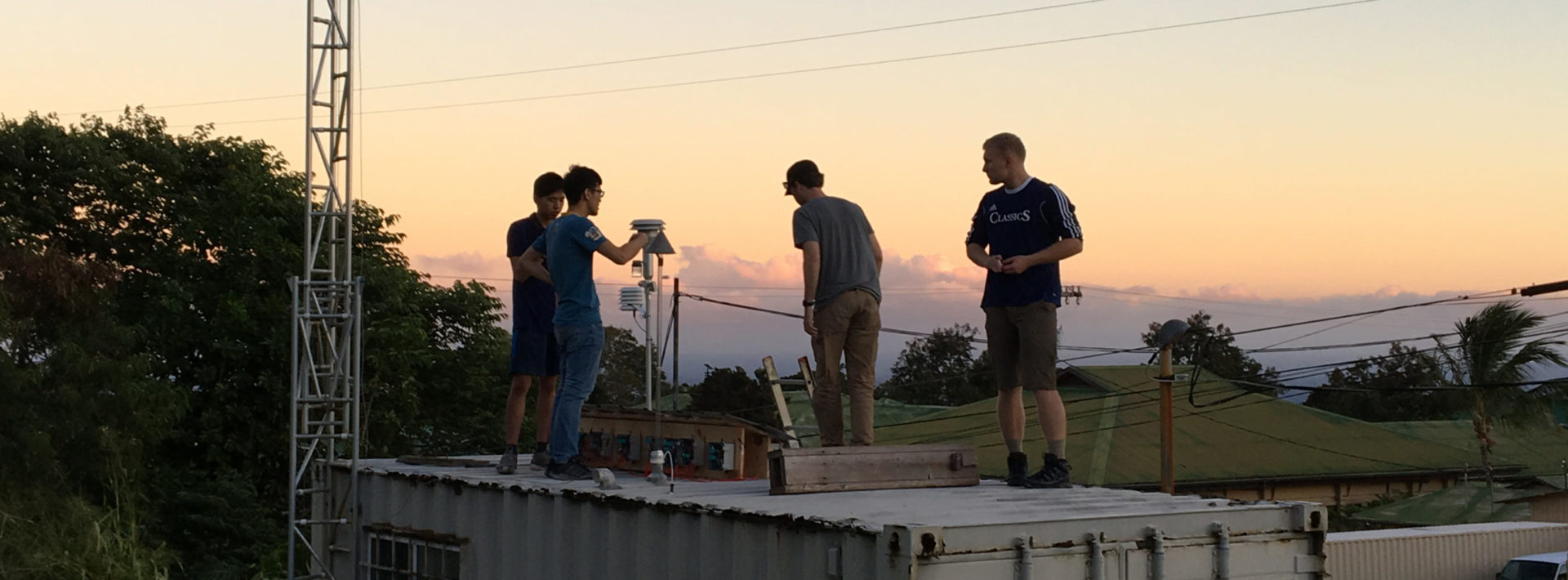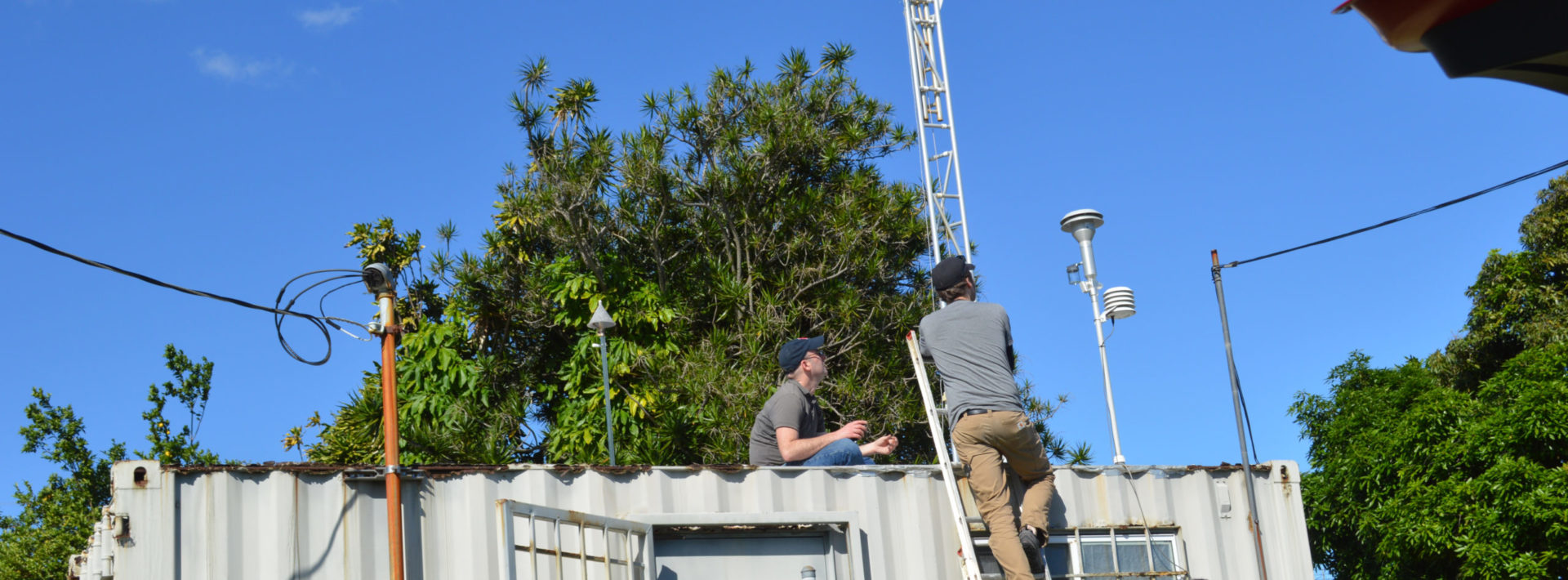TREX 2018 Day 2: Building and Naming Sensors

By David Wu ‘19
Day two began with a rainbow and ended with a sunset and 12 completed particle sensors ready for action. Early showers at Volcano National Park gave way to a beautiful Hawaiian display at the Halemaumau Crater Rim observatory. A vibrant rainbow on one side was matched with a breath-taking overlook into the mouth of Kilauea (a shield volcano that has been erupting since 1983).
After a quick stop for photos, we drove North to Hilo to stock up on groceries and get supplies for the rack that would house our sensors. The PM2.5 sensors which we partially built last Friday measure particles that are smaller than 2.5 microns in the air. At this size, particles pose a serious health risk because they can collect deep in lungs. Designed by our TA Ben Crawford, the sensors have a battery that can be charged by solar panels and are a cheap alternative to the precision sensors used by various health and environmental agencies like the DIH and EPA (approximately $200 compared to $10000+).
Although they are significantly cheaper than the heavy-duty sensors, our sensors need to be calibrated for reliable performance. We went to a Department of Health station near Pahala Elementary to test our sensors. The idea is to collect data for a couple days and compare it the data collected by the Department of Health’s precision sensors during the same timeframe. Then we calibrate the sensors, so hopefully they will be able provide accurate data when we move them to locations around the island.
This afternoon we built a simple rack to hold all our sensors for the calibrating process. During our trip to the hardware store, we discussed potential rack designs. The rack needed to elevate the sensors for air exposure and also accommodate each sensor’s solar panel.

Building the sensor rack.
As a general rule of thumb, solar panels should lay at an angle approximately located to the latitude (Hawaii is at 20 degrees so our solar panels had a 20 degree angle from the ground). The most important part of building the sensors was naming them. I dubbed mine Megatron and D-D-D-J Inferno! In the final minutes of daylight, we attached the final solar panel to our rack and were rewarded with beautiful sunset views. We’ll go on some hikes and take in the sun while the sensors collect data and check on them in a couple of days.

Angling the sensors.

Every year, a group of MIT students and professors travel to the Big Island of Hawaii to gain fieldwork experience through TREX (Traveling Research Environmental EXperiences). The first TREX trip was held in 2000, and since launching has taken students on research activities in domestic and international settings. For more undergraduate opportunities, click here.



